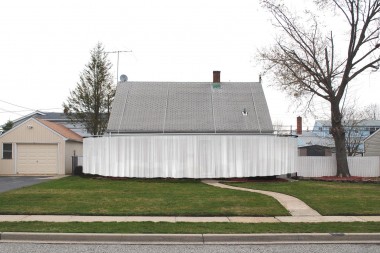The suburbs: no big investments necessary
by Renny Ramakers
Since we ran a store in Manhattan, I have been travelling a lot to New York in the past two years. It was an exciting time, not only to have a store over there but also to get to know this fantastic city and its inhabitants better. One of the first things that struck me was the enormous amount of outsourcing and the variety of services I had not seen before. On the street I saw people walking ten dogs, in restaurants I noticed that some servants did not do anything but pour water in your glass and at the hairdresser’s I noticed a multitude of separated tasks. Reading the book “Between Greed and Desire – The World between Wall Street and Main Street” by Heleen Mees, I learnt how typical this attitude is in New York and how many jobs it creates for people who otherwise might be unemployed.
Discover your inner service provider
These experiences inspired me to start a Droog Lab project in New York with the theme of the service economy. Led by Diller Scofidio + Renfro, our team investigated the theme on the spot and they discovered that providing service also has a psychological dimension. They came up with a proposal to help people discover their inner service provider. Since Manhattan is already saturated with these kind of services, they wanted to find a different context for the same dynamics. And they found the suburbs, which are desperately hit by the economic crisis and where emptiness and boredom are omnipresent. By stimulating a network of personal services, they wanted to bring new life into these dying neighbourhoods, bringing in more density and encouraging cohesion among the inhabitants.
Levittown, NY
They went to Levittown, the archetypical post-war US suburb, and found Ann, a very enthusiastic homeowner who activated a number of neighbours to create businesses in their homes. These businesses will be revealed in a one-day event on Saturday, April 23rd. We have organized a symposium at Studio-X New York in collaboration with Columbia University followed by a bus trip to Levittown. I can’t wait to see the businesses the homeowners have created.
A model
I see this as a model for suburbs worldwide, especially in the sprawling suburbs. A range of personal businesses can bring more capital and density to the neighbourhood. It also encourages social cohesion and can have a strong psychological impact. It also can have a sustainable dimension because it means less commuting. No big investments are necessary to revive the suburbs—in this model, the people can generate earnings. Just let them do it themselves.
If we really take this seriously we definitely have to refresh the architecture of suburban housing. We’ll have to find a new balance between the public and the private spaces of the house. A prerequisite is an adaptation of regulations. Therefore we invited a number of New York architects to come up with proposals for new housing configurations and regulatory modifications. Their concepts will also be on show in Levittown.
More information:
www.droog.com
www.openhouse2011.com
Image by L.E.FT

